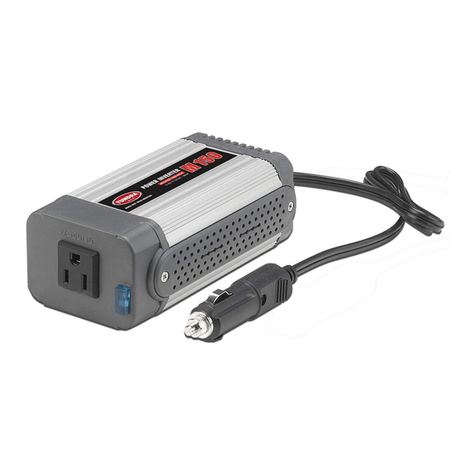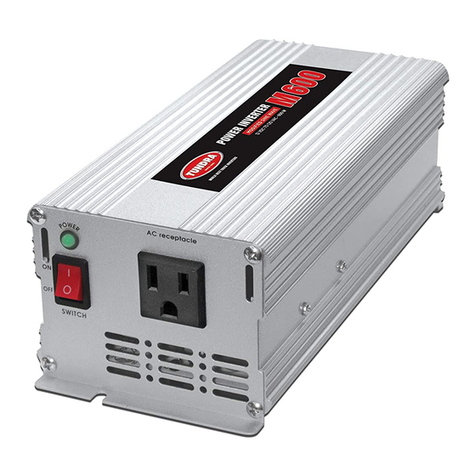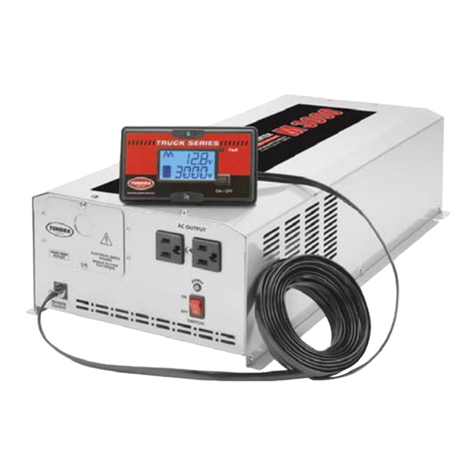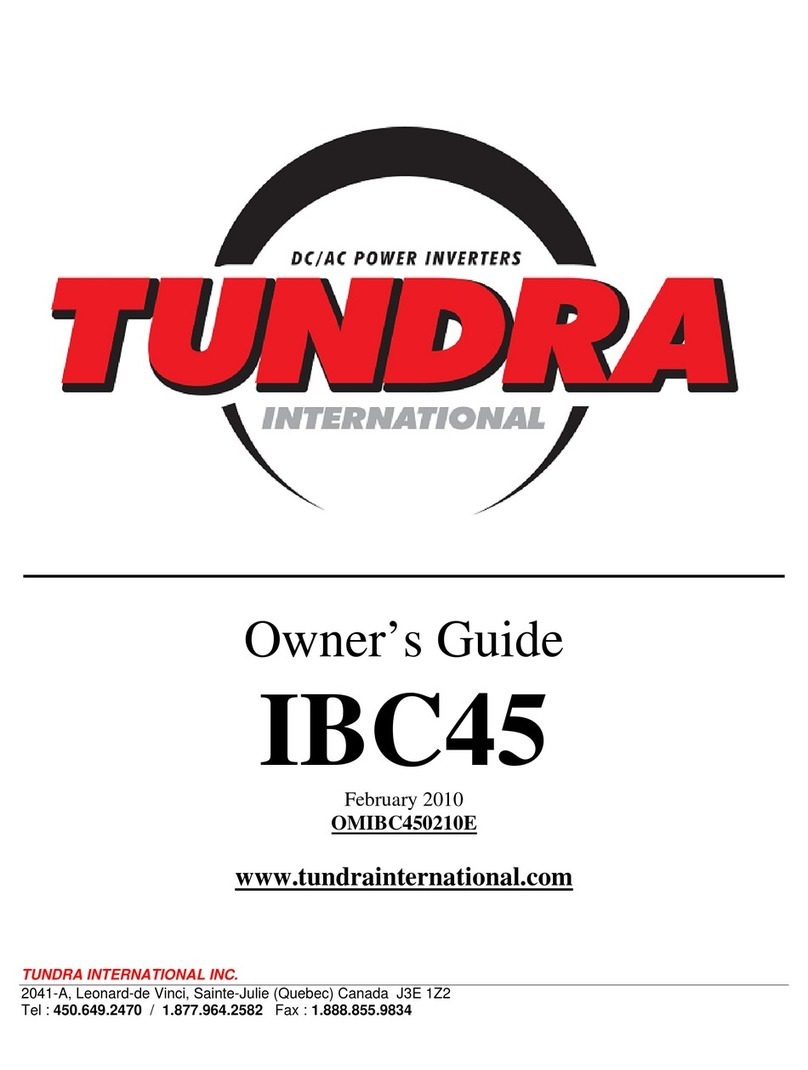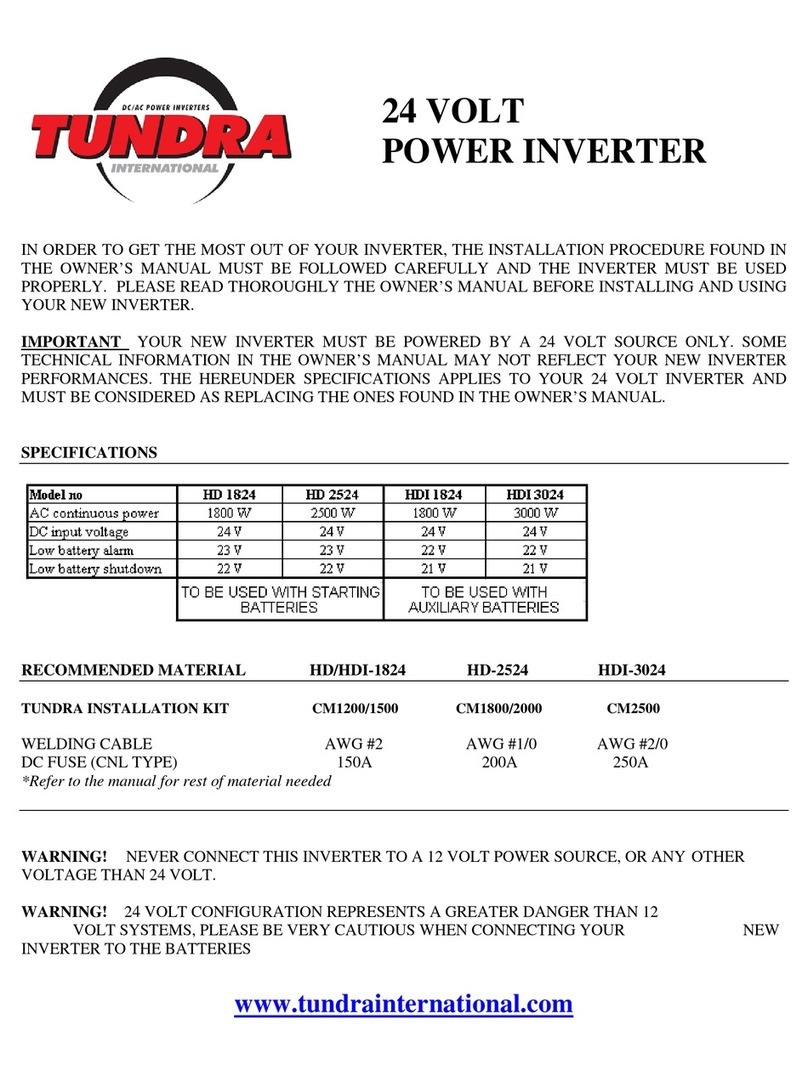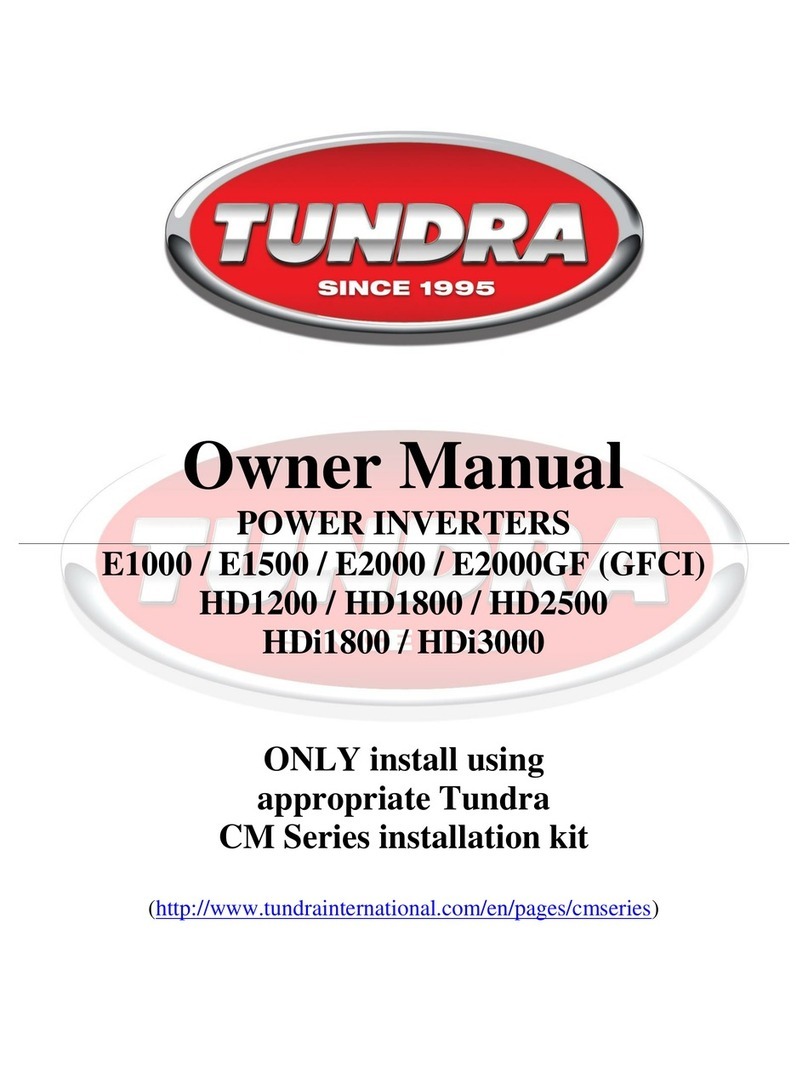
Quick Troubleshooting Guide
TUN-QTSG-0519-EN
For power inverter models M1500 – M2000 – M2500 – M3000
Tel.: 450.649.2470 / 1.877.964.2582 Fax.: 1.888.855.9834
TUNDRAINVERTERS.COM
C – DISCHARGED / BAD BATTERIES (Part 2)
3. ARE THE BATTERIES IN GOOD CONDITION?
A battery bank that gets discharged faster than usual could be at the end of its useful life.
Slowly recharge all 4 batteries and load-test them individually using a quality AVR designed for this
purpose. If one or more batteries are to be replaced, you should replace them all at once and keep the
good batteries for later temporary fixes.
4. ARE THE BATTERIES CLEAN?
Batteries should always be kept clean. The accumulation of dirt and wet contaminants tends to create a constant
discharge pattern (cycling) and favors premature wear. See PROCEDURE B (Page 8).
5. ARE THE BATTERIES RUNNING OUT OF POWER AFTER SEVERAL DAYS OF INACTIVITY?
Tundra power inverters consume about 150 mA (0.150 A) when turned ON and left unattended (no load is
supplied). At this level of consumption, it would take several weeks before completely discharging a truck
battery bank. If you have such discharg problems after of a few days of inactivity, it is most likely due to the
following two reasons:
A. The battery bank could be at the end of its useful life.
Slowly recharge all 4 batteries and load-test them individually using a quality AVR
designed for this purpose.
If one or more batteries are to be replaced, you should replace them all at once
and keep the good batteries for temporary fixes.
At the same time, verify alternator capacity.
B. You are dealing with one or more parasitic loads that are unrelated to the power inverter and that
discharge the vehicle's batteries (e.g. CB radio, refrigerator, electric blanket, fan, lamp).
If the batteries of the vehicle have been tested as functional, it is recommended you look for a parasitic
load before suspecting the inverter. See PROCEDURE D (Page 11).
BEST PRACTICE
A. Batteries should never be tested without being slowly recharged.
B. When evaluating batteries, alternator capacity should always be verified at the same time.
C. Never replace only one battery on a bank of 4 batteries. Combining new batteries with older ones will
promote a rapid deterioration of the most recent / better batteries.






